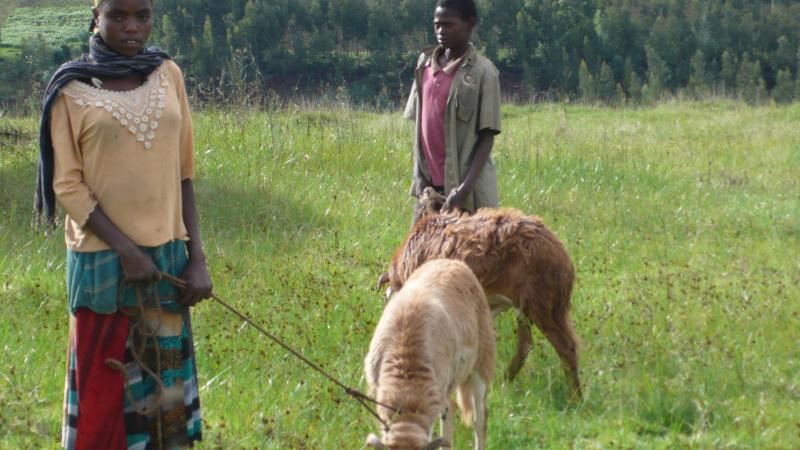Enhancing the income-raising potential of sheep

Research in Ethiopia identifies practical and cost-effective hormonal treatments to raise the reproductive performance of sheep– helping farmers to respond to new market opportunities and increase their incomes.
Although sheep remain important commodities in the Ethiopian highlands, low productivity seriously restricts their income-raising potential. The challenges facing Ethiopia livestock producers are immense. They include: low average carcass weights, high post-natal mortality rates, and low reproduction levels that rarely exceed 55 lambs per 100 mature females in the central highlands.
Reproductive performance can be increased through the use of progestogen-impregnated sponges and synchronization to allow the use of artificial insemination for breeding purposes. However, standard procedures can be costly, are often unavailable, and give rise to various problems such as irritations, vaginitis, and sponge retention, which can all adversely impact fertility. Cheaper, more practical, and safer alternatives are needed.
Exploring alternative procedures
With Ethiopian partners, ICARDA scientists explored the effectiveness of three hormonal treatments applied to three groups of 30 cycling adult ewes at a site in the Ethiopian highlands: a standard ‘P’ protocol based on the use of progestogen-impregnated sponges followed by a stimulation of the ovaries; a much simpler ‘PGF’ treatment involving the synchronization of oestrus and ovulation using two injections of prostaglandin, eleven days apart; and a ‘GnRH’ treatment where ewes had their oestrus and ovulation synchronized with a combination of gonadotropin-releasing hormones (GnRH on day 0 and day 9, and a prostaglandin on day 6).
The lambing rates of the ewes impregnated with PGF and GnRH treatments were extremely positive – 89.7% and 86.7%, respectively, in comparison to only 70.4 % in ‘P’ ewes. They were also significantly less costly than the ‘P’ protocol, making them more attractive for large field applications for sheep spontaneously ovulating. Ethiopian sheep breeds are non-seasonal, have year-round estrus and ovulatory activities, and are therefore good candidates for these new alternative protocols.
Rising productivity – and profitability
The research has enormous implications for small-scale sheep farmers. By identifying practical and low-cost hormonal treatments and reversing the low productivity that is characteristic of sheep farming in the Ethiopian highlands, farmers can now benefit more from existing breeding programs and produce more meat, milk, and other sheep products.
The study - ‘GnRH and prostaglandin-based synchronization protocols as alternatives to progestogen-based treatments in sheep’ – was recently published by the scientific journal 'Reproduction in Domestic Animals' and can be accessed here.
Author: Rekik Mourad.



